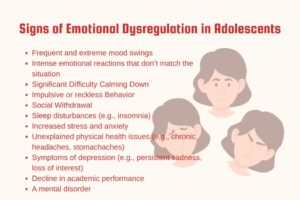Human thought is a complicated physiological process, and although we’d like to think we have complete control, we do not. That’s not to say we cannot, but in most cases, our minds get the better of us, resorting to intrusive thinking that creates disturbing, troubling images that seem to conjure out of nowhere. Regardless of the context, such thinking can create feelings of negativity, worry, and shame, often disturbing our mental wellbeing. How do we get rid of intrusive thinking? This blog post aims to deliver an understanding of such thinking and 10 practical strategies for managing intrusive thoughts.
Understanding Intrusive Thoughts
Perhaps the worst thing about intrusive thinking is that the more you try to eliminate such thoughts, the more they persist in your mind. The content of such thoughts could range from sexual and violence to hatred, jealousy, malice, and even fear. According to the Anxiety and Depression Association of America, almost six million people in America alone suffer from intrusive thinking as a mental disorder. The condition can sometimes be associated with other mental disorders like OCD (obsessive-compulsive disorder), with repetitive thoughts and compulsions forming the crux of the problem. Intrusive thinking is also a common feature in PTSD (post-traumatic stress disorder) and can be triggered by traumatic events such as past accidents, attacks, or a stressful event.
What one needs to understand is how intrusive thoughts are involuntary, recurring thoughts that often manifest as distressing, irrational, or unwanted. They are usually cause for concern because of their repetitive and distressing nature. Moreover, the fact that they are irrational and unwanted makes them a nuisance and a disturbing trait of one’s mental wellbeing. Ironically, intrusive thinking is part of human nature, so not fighting them is critical to managing them. Unfortunately for some people, they can become pervasive and disruptive, interfering with daily functioning, and causing significant distress. In such a situation, intrusive thinking needs effective management strategies to be dealt with.
What Causes Intrusive Thinking?
Positivity in life usually takes a back seat, as our brains wired more toward favoring negative thinking. Have you often wondered how positive thinking lasts for a short fleeting moment, whereas your mind usually builds up on worry, fear, and anxiety? Because of such a condition, intrusive thinking is inevitable. The thing is, why do intrusive thoughts remain with some and not with others? There is no definite answer except that it could result from individual responses to the thought process that forms the pathway to generating thoughts.
A clear example of how intrusive thinking impacts a person with anxious tendencies towards fear is in the case of a traumatic event. If the intrusive thoughts are linked to a traumatic event in the person’s life, they may act upon the idea, breathing more life into it and making it more threatening than it appears to be. This creates confusion, proving to the brain that there is something to fear even when there isn’t. According to experts, intrusive thinking is often caused by stress and anxiety and could be a short-term problem in people with no mental disorders. They are not harmful, nor do they indicate you have some deep, dark desires in the back of your mind.
thus, intrusive thinking is more a spontaneous and immediate reaction to a thought, feelings, sensations (increased heart rate), etc., and not a reflection of our immediate reality.
How Do You Identify an Intrusive Thought?
How can you tell if you’re experiencing intrusive thinking? Here are the signs:
- Unusual thoughts: Intrusive thoughts are different from your usual way of thinking. They may be violent, sexual, or of intense fear.
- Bothersome: Disturbing thoughts are those you want desperately to eliminate from your mind. Such thoughts can be termed intrusive.
- Thoughts that cannot be controlled: Sometimes, intrusive thoughts are those you cannot remove from your mind or control, becoming more intense.
The Negative Impact of Intrusive Thoughts
When left unmanaged, intrusive thoughts can have profound adverse effects on various aspects of life.
- Mental Health: Persistent intrusive thoughts can contribute to anxiety disorders, depression, obsessive-compulsive disorder (OCD), post-traumatic stress disorder (PTSD), and other mental health conditions.
- Emotional Wellbeing: Constant intrusive thinking can lead to feelings of guilt, shame, fear, or sadness, negatively impacting one’s overall emotional stability and resilience.
- Interpersonal Relationships: Intrusive thoughts may interfere with social interactions, causing individuals to withdraw from loved ones or avoid certain situations out of fear or discomfort.
- Productivity: Intrusive thinking can impair concentration, memory, and decision-making abilities, hindering productivity at work or school.
- Quality of Life: Over time, the cumulative impact of intrusive thoughts can diminish one’s enjoyment of life, limiting opportunities for growth, fulfillment, and happiness.
Strategies To Manage Intrusive Thinking
Once you have understood the significance of intrusive thinking, it’s time to manage it through introspection and understanding.
Here are ten strategies for managing intrusive thinking.
1. Cognitive Behavioral Therapy (CBT)
CBT is a therapeutic approach that helps individuals identify and challenge negative thought patterns. Through techniques such as cognitive restructuring and exposure therapy, CBT empowers individuals to reframe their perceptions and reduce the intensity of intrusive thoughts.
2. Mindfulness techniques
Mindfulness techniques integrated with CBT strategies can help manage stress and induce mental relaxation. Techniques like mindfulness meditation (observing intrusive thoughts as passing mental events rather than truths or threats), guided imagery, progressive muscle relaxation, and deep breathing can improve sleep, reduce muscle tension, and promote well-being. Mindfulness meditation helps individuals develop a greater sense of detachment and calm.
3. Grounding Techniques
Grounding techniques like mindfulness involve sensory experiences anchoring oneself in the present moment. Examples include deep breathing exercises, progressive muscle relaxation, or focusing on the sensations of touch, sight, sound, smell, or taste.
4. Exposure and Response Prevention (ERP)
Exposure and Response Prevention (ERP) is a CBT technique to help individuals manage anxiety created by intrusive thinking. It involves exercises that expose individuals to triggers that stimulate anxiety while preventing them from resorting to avoidance behavior or attempting to fight the thought process. This neutralizes the intensity of the intrusive thinking, reducing the stress and distress over time, including the need for compulsive and obsessive behavior.
5. Thought Labeling
Labeling your thoughts as intrusive and recognizing them as just products of your mind instead of your reality can help you distance yourself from the content of intrusive thinking.
Tell yourself, this is temporary, this isn’t real, it is just a product of my mind, it is here now, but might be gone in an instant.
6. Acceptance and Commitment Therapy (ACT)
ACT therapy is a proven and superior therapy for several behavioral disorders. ACT encourages individuals to accept their thoughts and feelings without trying to suppress or control them. By fostering acceptance and mindfulness, ACT helps individuals clarify their values and commit to meaningful goals despite intrusive thoughts.
7. Distract and Redirect
An effective coping strategy is to engage in an activity that captures your attention and shifts focus away from intrusive thoughts. Energy-redirected activities can also include hobbies, interaction with family, exercises, and walking with nature. These are positive endeavors that help break the cycle of intrusive thought.
8. Create a Safe Space
Designate a physical or mental space where you feel secure and at ease to provide respite from intrusive thoughts. Whether it’s a cozy corner in your home, a serene natural setting, or a guided imagery exercise, having a safe space to retreat can offer comfort and solace during challenging moments.
9. Practice Self-Compassion, not Self Judgement
Avoid judging yourself. Intrusive thinking may seem taboo, strange, weird, and even shameful, but it does not indicate something is wrong with you. It is natural. Rather than judging yourself, cultivate self-compassion and treat yourself with kindness, understanding, and acceptance, especially when facing intrusive thoughts or emotional distress.
10. Seek Professional Support
Finally, if intrusive thoughts disrupt your daily life, don’t hesitate to seek professional help. Therapists, counselors, and psychiatrists can provide personalized guidance, support, and treatment options tailored to your needs and circumstances.
Managing intrusive thoughts requires patience, self-awareness, and resilience. By implementing these strategies and seeking support when needed, individuals can cultivate inner peace, reclaim control over their minds, and lead fulfilling lives despite the presence of intrusive thoughts. What you need to understand is that you are not defined by your thoughts but by how you choose to respond to them.


